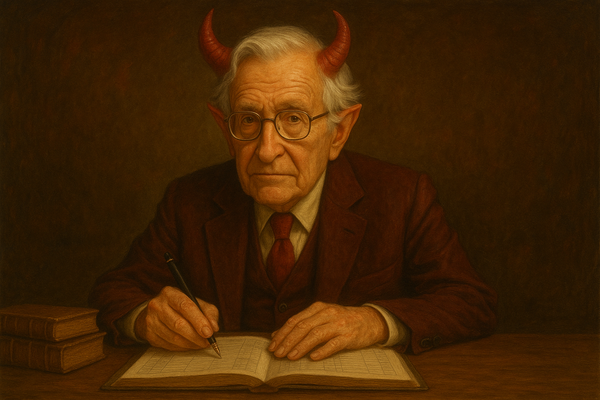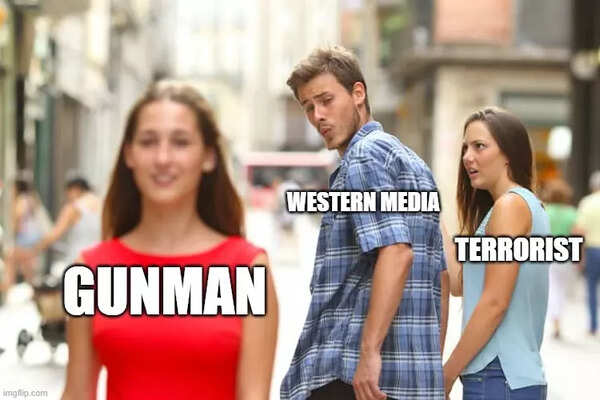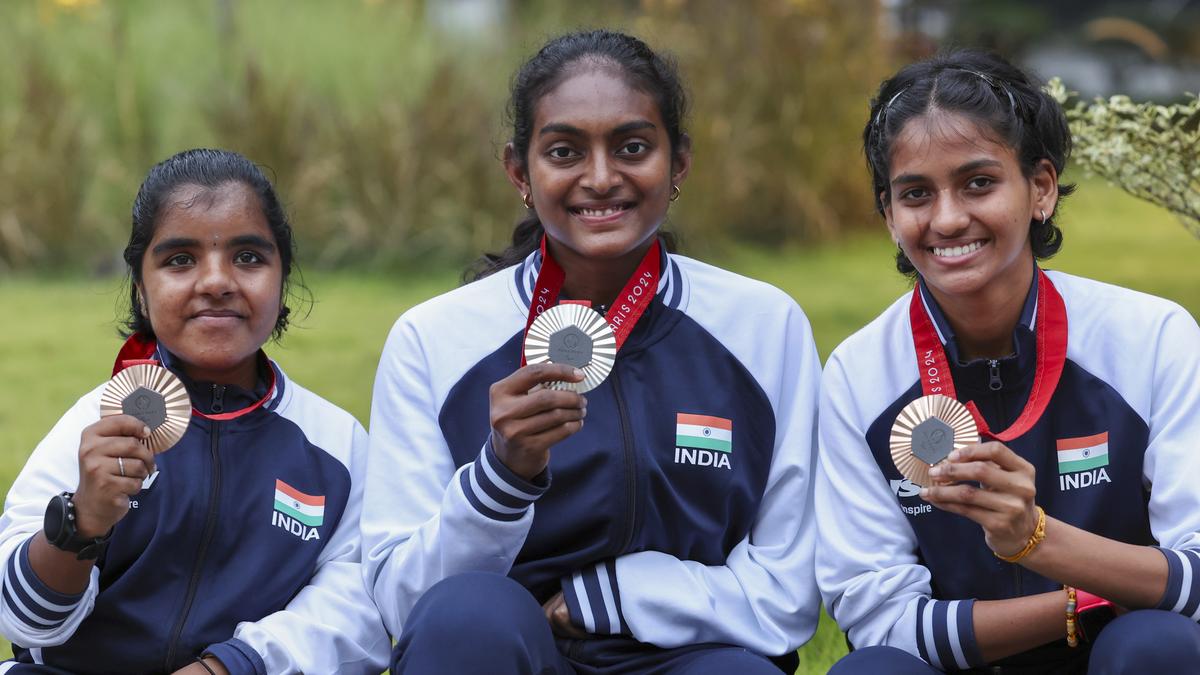A famous anecdote about Mahatma Gandhi claims he was once asked by a reporter what he thought of Western civilisation. He ostensibly replied: “It sounds like a good idea,” a tongue-in-cheek remark critiquing the moral decay that surrounds any society built on the edifice of slavery and the opium trade. The same could be said about the Western media’s propensity for “neutral coverage” when reporting events outside Europe and the Anglosphere. Hanlon’s Razor states: “Never attribute to malice that which is adequately explained by stupidity.” Ignorance or stupidity is the most benign explanation for the Western media’s habit of finding whitewashed euphemisms for terrorists, as evidenced by their recent coverage of the Pahalgam terror attack, where terrorists brutally killed 26 people.
Alternatively, perhaps they are haunted by the patron saint of typos, Titivillus — the demon from medieval Christian folklore who would whisper distractions into the ears of monks copying manuscripts — preventing modern journalists from using the word “terrorist” and instead pushing them to reach for vague, anaemic euphemisms like gunmen, militants, or rebels to describe radical fanatics who checked people’s religion before executing them.

Levity aside, Noam Chomsky, the Devil’s Accountant, argued in Manufacturing Consent that language is a powerful tool of propaganda: a mechanism of power, control, and ideology designed to manipulate meaning, shape perceptions, and quietly tilt the moral compass without anyone noticing. He wrote: “The way the world is structured, the way it’s talked about, the way it’s perceived — all of that is shaped in a very large measure by the structure of language and by the use of language.”
Perhaps that explains why, when 26 people were executed in cold blood — not caught in crossfire, not victims of a riot, but deliberately and methodically hunted down — in the hills of Pahalgam, it took mere hours for the world’s most “respected” news organisations to do what they do best: sanitise the truth, neutralise the outrage, and euphemise the crime into something palatable enough. It’s almost a redux of Arundhati Roy’s infamous Gandhians with guns remark to describe Maoists.
It is a predictable pattern, and that predictability is not a flaw but a feature.
When Hindus are killed, the story must always be reframed — not as religious persecution or ideological terror, but as part of some nebulous, ongoing “tension,” a word so vague it could mean anything, and therefore means nothing.
The victims are quietly transformed into faceless statistics, stripped of religion, identity, and dignity; the perpetrators are softly described as “unknown assailants” or “radicals with grievances,” and terrorism itself is neutered into a regrettable but unavoidable “incident.”
This is not a matter of laziness, nor is it an excess of journalistic caution; it is bias — deliberate and sustained — the kind that recasts murderers into misunderstood actors in a conflict too complex for moral clarity, and victims into inconvenient footnotes.
In the global newsroom’s carefully maintained hierarchy of grief, Hindu lives occupy a peculiar space: simultaneously too privileged to be mourned and too politically awkward to be acknowledged.
As a result, even when Hindus are targeted — not randomly, but systematically and ideologically — the coverage edges delicately around the truth, lest the narrative fracture under the weight of inconvenient facts.
One only needs to contrast this with the media coverage after September 11. The towers had not even stopped burning before every major outlet called the event what it was: a terrorist attack, an assault on civilisation itself. There was no hesitation, no forensic caution, no whispered euphemisms. It was not described as an “incident.”

It was not softened into a “militant strike.” It was not obfuscated as a “gunman-led explosion.” The perpetrators were named: Islamic terrorists, jihadists, al-Qaeda operatives. The victims were named: Americans. The moral lines were drawn in thick, black ink, and nobody seemed concerned about nuance or complexity.
In fact, even when a country was decimated based on fabricated intelligence — when Iraq was bombed into the Stone Age without a single WMD in sight — the media couldn’t find its spine.
Yet when 26 Hindus are lined up, interrogated about their religion, and shot for not being Muslim, the global media suddenly discovers the need for verification, for context, for delicate vocabulary. Because to call it terrorism would be to assign ideology; and to assign ideology would be to shatter the comforting mythologies that surround Islamist violence when its victims do not fit the West’s preferred archetypes.
Thus, the editorial policy becomes one of quiet erasure. The language is flattened; the ideology blurred; the blood, metaphorically speaking, scrubbed from the frame until the memory of the victims fades into a haze of “tensions” and “militants” and “gunmen” whose motivations must, somehow, remain forever mysterious.
It is important to understand exactly what these euphemisms achieve.
A gunman suggests randomness.
A militant implies a political grievance.
A rebel hints at a noble cause.
Every word strips away the ideological core of the act, recasting a deliberate, religiously motivated massacre into something almost accidental, almost forgivable, almost understandable.
By refusing to call it terrorism, the media does not merely absolve the killers; it prevents any serious reckoning with the broader forces — cross-border jihad, radicalisation, Pakistan’s proxy wars — that enabled such brutality in the first place.
Perhaps most insidiously, this linguistic laundering dehumanises the victims.
If 26 Jews had been murdered in Paris, or 26 Christians had been slaughtered on Easter Sunday in Sri Lanka, or 26 LGBTQ club-goers had been gunned down in Orlando, there would have been no hesitation in calling it terrorism; the candles would have been lit, the headlines would have screamed, and the op-eds would have poured in, demanding justice, vengeance, and global soul-searching. The same West that bans Russian athletes from every tournament for invading Ukraine somehow finds it outrageous that Pakistani cricketers don’t get to play in the IPL — as though cross-border terrorism deserves a sporting exemption.

But then again, for those of us who have followed the Western media for a long time, it’s evident that legacy media seldom departs from the party line. There are several petards that can be hoisted to expose the Western media’s explicit complicity in silencing voices that are different. Like the time they labelled everyone who suggested Covid was a lab leak a ‘racist’. Or when they all followed a Chinese Omertà on Joe Biden’s diminishing mental acuity. Or how they eschewed any pretence of sticking to Merton’s principles when discussing gender ideology or trans people in women’s sports. It’s as if they have a set of guidelines they must follow, irrespective of what happens, or where.
But when Hindus are massacred, they are quietly demoted to statistics; they are flattened into “tensions,” buried under euphemisms, and met with the kind of silence that speaks louder than any headline.
It is not that the Western media does not know better; it is that they choose not to do better — because doing better would require confronting the uncomfortable truth that victims do not always conform to the neat narratives carved out for them, and that not all ideologies are equally safe, or politically convenient, to expose.
And so the cycle continues, with gunmen and militants and rebels and incidents and tensions — but never terror, never jihad, and certainly never Hindus.
Society is built on the mendacious edifice that all lives matter; the Western media’s coverage is a reminder that only some do — based on their religion, nationality, and ideology. From the Renaissance to the Enlightenment, the West once taught the world to value truth, reason, and human dignity. Today, in the quiet erasure of inconvenient victims, it betrays the very civilisation it once proudly built.






